Convenience often comes with a price. In the case of commercial toothpastes, that price may be your health. Here’s why tooth powder is a better choice.
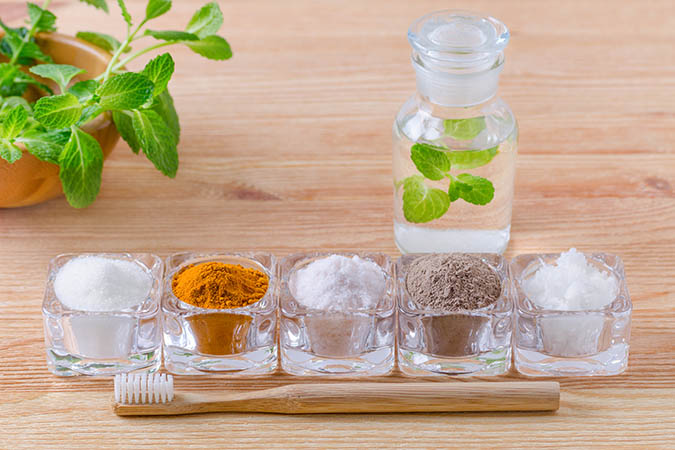
6 Reasons You Should Be Using Tooth Powder
I’m going to give you the main spoiler right up front. Tooth powder is more effective than toothpaste.1)Khan, Muhammad Khalil, Ayyaz Ali Khan, Tasleem Hosein, Abdul Mudassir, Kamran Masood Mirza, and Asim Anwar. “Comparison of the Plaque-Removing Efficacy of Toothpaste and Toothpowder.” Journal of the International Academy of Periodontology. U.S. National Library of Medicine, January 2009. https://www.ncbi.nlm.nih.gov/pubmed/19192578 Why? We’ll get to that in a second. But first, I want you to ask yourself, “Why are store shelves lined with toothpaste instead of tooth powder?” Many people haven’t even heard of tooth powder. Toothpaste is so ubiquitous that no other options seem to exist.
You May Also Enjoy:
Historically, this hasn’t been true. For thousands of years, before our ancestors had modern toothpastes, humans relied on nutrition to build healthy teeth and tooth powders to protect them. And archeological records shows that they had better oral health than we do.2)Eveleth, Rose. “Prehistoric Humans Had Better Teeth Than We Do.” Smithsonian.com. Smithsonian Institution, February 25, 2013. https://www.smithsonianmag.com/smart-news/prehistoric-humans-had-better-teeth-than-we-do-26567282 What did the ancient Romans, Greeks, Egyptians, Chinese, and various other peoples around the world know that we have forgotten?
Modern commercial toothpastes only came about in the late 1800s. And it was another few decades before they really became popular. Was this change due to medical improvements, or new discoveries in tooth hygiene? Nope. It was all thanks to the invention of the collapsible plastic tube.
A plastic tube made toothpaste just a little faster, a littler easier, and a little less messy than using tooth powder. Most people, when given the option, will choose convenience over quality every time. It’s the same reason people eat microwavable TV dinners instead of real food.
Unfortunately, convenience often comes with a price. And in the case of commercial toothpastes, that price may be your health.
Common Toothpaste Ingredients
Not all toothpaste brands or ingredients are harmful. But many toothpastes include a number of ingredients that can cause problems. Even more unfortunate is that these ingredients are also unnecessary. Fair warning: You may never look at your toothpaste the same way again.
Fluoride
Fluoride is thought to protect teeth by making them more resistant to cavities, though this may not be as certain as previously assumed.3)“A Lack of Fluoride Is Not a Cause of Cavities.” Mercola.com. Accessed January 15, 2020. https://articles.mercola.com/sites/articles/archive/2014/05/13/water-fluoridation-dental-health.aspx In addition, fluoride is linked to reduced IQ levels, increased absorption of aluminum, bone fractures, and damage to multiple parts of the brain, and it could potentially be connected to various cancers.4)“Harvard Study Shows the Effects of Fluoride on Children’s IQ.” Mercola.com. Accessed January 4, 2020. https://articles.mercola.com/sites/articles/archive/2012/08/07/effects-of-fluoride-to-children.aspx
Foaming Agents
Sodium lauryl sulfate and diethanolamine (DEA) are surfactants. They lower the surface tension of water, helping toothpaste to form foamy bubbles. This helps the toothpaste get into tight spaces and lift plaque off of your teeth. But these chemicals also come with risks.
Sodium lauryl sulfate can cause mouth irritation and canker sores.5)“What’s in Your Toothpaste? A Look at 5 Common Ingredients.” What’s in your toothpaste? – A look at 5 common ingredients. Accessed January 15, 2020. https://www.deltadentalins.com/oral_health/whats-in-your-toothpaste.html It can also be contaminated with 1,4-dioxane, a carcinogen.
You May Also Enjoy:
“Homesteading Basics: Is the Fruit You Eat Bad for Your Teeth?”
DEA is a hormone disruptor and has the potential to react with other ingredients to create probable carcinogins.6) “Toxic Toothpaste Ingredients You Need to Avoid.” Mercola.com. Accessed January 15, 2020. https://articles.mercola.com/sites/articles/archive/2015/09/09/toxic-toothpaste-ingredients.aspx
Glycerin
Glycerin is a sweet-tasting substance that is added to toothpaste to improve its flavor. It can also be found in many processed foods. Glycerin is oily and sticky. When you brush with glycerin, it coats your teeth, creating a barrier that prevents remineralization and nutrient balance.
We’ve made it easier than ever to replace your store-bought toothpaste with something natural, clean, and eco-friendly. With our DIY Tooth Powder Kit, you get all the ingredients you need for teeth cleaning, already premeasured and ready to mix! Click here for details.
Artificial Colors
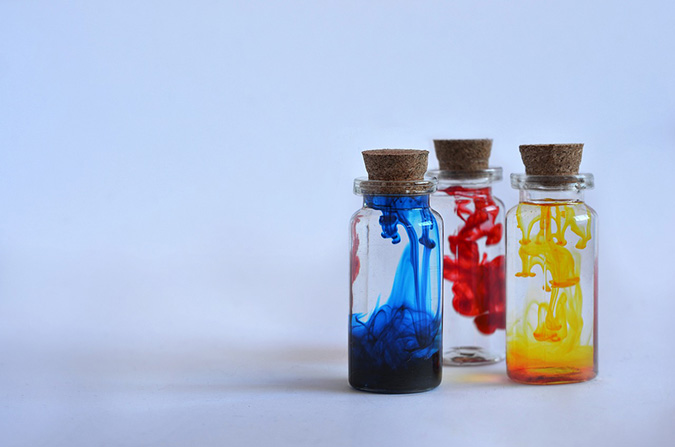
Image by Jalyn Bryce from Pixabay
Artificial colors can be found in many toothpastes and a disturbing number of foods. They are frequently made from petroleum, and some contain aluminum or other harmful metals. Artificial colors can cause allergies and hyperactivity, and many of them are probable (or confirmed) carcinogens.7)Young, Gary D. Ancient Einkorn: Todays Staff of Life: Hybrid Grains, GMOs and Chemicals, Truth or Consequences. Lehi, UT: Young Living Essential Oils, 2014
Artificial Sweeteners
Toothpastes often include artificial sweeteners to improve their taste without contributing to cavities. Some artificial sweeteners are worse than others, but many have been associated with unhealthy effects. The sweetener aspartame has been linked to kidney disease, brain and mood disorders, weight gain, fibromyalgia, diabetes, cancer, and more.8)Edwards, Rebekah. “Aspartame Side Effects: Avoid This Common Food Additive.” Dr. Axe, May 13, 2019. https://draxe.com/nutrition/aspartame
Aluminum
Aluminum oxide is a common abrasive in toothpaste, and can make up the bulk of what’s in the tube. The upside is that it can gently clean plaque from teeth without damaging enamel. The downside is that you’re brushing your teeth with what amounts to a blob of aluminum.
You May Also Enjoy:
“23+ Surprising Sources of Toxic Aluminum … and How to Detox!”
Aluminum, in case you were wondering, is basically the antithesis of good health. It accumulates in the brain, lungs, liver, and kidneys—more or less everywhere you wouldn’t want it to be.9)“High Aluminum Levels in 80 Percent of People Tested.” NaturalHealth365, October 19, 2018. https://www.naturalhealth365.com/aluminum-toxicity-2260.html Aluminum is strongly linked to Alzheimer’s disease and other neurodegenerative conditions.10)“High Aluminum Levels in 80 Percent of People Tested.” NaturalHealth365, October 19, 2018. https://www.naturalhealth365.com/aluminum-toxicity-2260.html11)“New Study Confirms Alzheimer’s and Aluminum Link Can No Longer Be Ignored.” Mercola.com. Accessed January 12, 2020. https://articles.mercola.com/sites/articles/archive/2014/03/22/aluminum-toxicity-alzheimers.aspx
Common Tooth Powder Ingredients
Traditional tooth powders have included a wide variety of ingredients. Several cultures have used a medicinal herbs. You’ll also find references to oyster shells, animal bones, and even burnt bread. Let’s take a look at some of the more popular options. Afterward, you’ll wonder why you ever used anything else.
Horsetail
No, not a horse’s tail. I’m talking about a plant: specifically Equisetum hyemale. While several species of horsetail can be used, this species has the best mix of beneficial attributes and safety. Horsetail stalks can be chewed fresh or dried, but are more often used in a powdered form. They have a high mineral content, including silica, which helps to strengthen teeth while removing plaque.12)“Equisetum Hyemale (Horsetail): The BEST Plant for Tooth Health 8 More Benefits!” The Grow Network, November 6, 2019. https://thegrownetwork.com/equisetum-hyemale-horsetail
Horsetail can also be taken internally to strengthen bones, connective tissues, hair, nails, and skin.13)“Equisetum Hyemale (Horsetail): The BEST Plant for Tooth Health 8 More Benefits!” The Grow Network, November 6, 2019. jQuery('#footnote_plugin_tooltip_922619_1_13').tooltip({ tip: '#footnote_plugin_tooltip_text_922619_1_13', tipClass: 'footnote_tooltip', effect: 'fade', predelay: 0, fadeInSpeed: 200, delay: 400, fadeOutSpeed: 200, position: 'top right', relative: true, offset: [5, 5], });">https://thegrownetwork.com/equisetum-hyemale-horsetail[/note]
We occasionally have a very limited supply of Equisetum hyemale (in a hard-to-find, easy-to-take powder form) available in our store here. This Equisetum hyemale was hand-wildcrafted by Doug Simons himself in the most pristine natural habitats, far from any chemical residues or toxins. This herb is common—prolific in much of North America, Europe, and Asia—but because of where it grows, it’s incredibly hard to find a source that’s clean enough for internal use as Doug recommends in “Alternatives to Dentists.” This is a rare opportunity to get the highest quality Equisetum hyemale that can be found anywhere. Click here to learn more about our Equisetum hyemale powder today.
Bentonite Clay
Bentonite clay is a special clay made from volcanic ashes. In technical terms it would be referred to as aluminium phyllosilicate clay.
And if you’re not just skimming this (because, who would ever do such a thing?), then you may have noticed the word “aluminium.” (Yes, that’s the non-North American spelling of “aluminum.”)
“Wait a minute!” you interject. “I thought we’d already established that aluminum was bad.” Yes, it is (dramatic pause), IF you absorb it. Bentonite clay is more in the business of collecting things than releasing them. Rather than adding aluminum to your body, it actually helps to remove it!14)Pessin, Donna. “Aluminum in Bentonite?!” Unique Healing by Donna Pessin, November 10, 2010. https://uniquehealing.com/aluminum-in-bentonite In your mouth, bentonite clay binds to bacteria and toxins, helping to clean up the neighborhood.15)Axe, Josh. “The Age-Old Practice That Supports Skin & Gut Health.” Dr. Axe, September 4, 2019. https://draxe.com/nutrition/10-bentonite-clay-benefits-uses
Baking Soda
Baking soda can be used as an abrasive to brush away plaque from teeth. It also has tooth-whitening and breath-freshening properties.16)Boldt, Ethan. “33 Surprising Baking Soda Uses & Remedies.” Dr. Axe, April 30, 2018. https://draxe.com/nutrition/baking-soda-uses Overuse could potentially weaken enamel. You can minimize this risk by using it in a blend with other ingredients, or by using it only a few times a week.
Activated Charcoal
You might think that rubbing charcoal on your teeth would turn them black. Surprisingly, it has the opposite effect. This isn’t the charcoal you have to scrape off of your grill. Activated charcoal is a special form of charcoal that is highly porous and has wonderful absorption and detoxification properties. It’s used as an emergency detoxifier in cases of chemical exposure and drug overdoses. But for our purposes, it has the ability to bind with, and remove, surface stains on your teeth, and to favorably alter the pH of the mouth.17)Axe, Josh. “Activated Charcoal Removes Toxins, Whitens Teeth and More!” Dr. Axe, July 5, 2019. https://draxe.com/nutrition/activated-charcoal-uses This has a whitening and protective effect on your teeth.
Peppermint
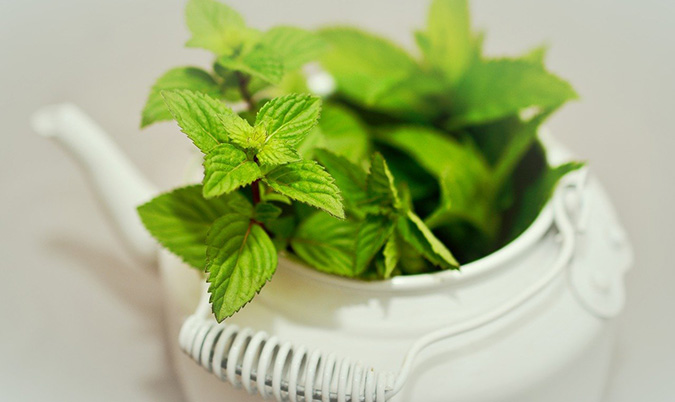
Image by congerdesign from Pixabay
You could probably guess that peppermint makes your mouth feel cool and clean, and freshens your breath. But did you know that it kills bacteria in your mouth? Peppermint also has pain-relieving and energizing properties, and can help you breathe easier.18)Axe, Josh. “Peppermint Oil Uses, Benefits, Side Effects and More.” Dr. Axe, August 3, 2019. https://draxe.com/essential-oils/peppermint-oil-uses-benefits
Eggshells
Powdered eggshells can be added to tooth powders as an abrasive and to enhance tooth remineralization. Eggshells are mostly composed of calcium (as are your teeth), but are also rich in other important minerals. As with many other natural tooth powder ingredients, eggshells are safe to use internally. Many people use them as a natural mineral supplement.
Coconut Oil
Technically, this isn’t used in a tooth powder, because it isn’t a powder. But coconut oil is still a common ingredient in natural tooth care. Coconut oil is naturally antibacterial, antifungal, and anti-inflammatory. It helps kill harmful bacteria in the mouth, remove plaque, and promote healthy gums.19)Peedikayil, Faizal C, Prathima Sreenivasan, and Arun Narayanan. “Effect of Coconut Oil in Plaque Related Gingivitis – A Preliminary Report.” Nigerian medical journal : journal of the Nigeria Medical Association. Medknow Publications & Media Pvt Ltd, 2015. https://www.ncbi.nlm.nih.gov/pmc/articles/PMC4382606 Coconut oil is also an excellent source of medium-chain triglycerides (MCT), which have brain-protecting effects and show promise in the prevention and treatment of Alzheimer’s disease.20)“Why Coconut Oil Is So Good For You.” Mercola.com. Accessed January 15, 2020. https://articles.mercola.com/sites/articles/archive/2017/06/05/coconut-oil-fattening-myth.aspx They’re basically the opposite of aluminum in many commercial toothpastes.
Neem
Neem is a tropical plant with a variety of uses, but is most well-known for its oral health applications. Neem is strongly antimicrobial against bacteria associated with cavities and gum inflammation.21)Subapriya, R, and S Nagini. “Medicinal Properties of Neem Leaves: a Review.” Current medicinal chemistry. Anti-cancer agents. U.S. National Library of Medicine, March 2005. https://www.ncbi.nlm.nih.gov/pubmed/15777222 It also has tooth-whitening properties and freshens breath. The sticks from the neem tree can even be used as natural toothbrushes.
What Do You Think?
Could you resist checking your toothpaste’s ingredients as you read through this? Go ahead. I’ll wait…. What did you find? Or are you already a tooth powder user? What are your favorite ingredients? Let me know in the comments!
________________
This is an updated version of an article that was originally published on February 15, 2020.
The Grow Network is a participant in the Amazon Services LLC Associates Program, an affiliate program designed to provide a means for our team to earn fees for recommending our favorite products! We may earn a small commission, at no additional cost to you, should you purchase an item after clicking one of our links. Thanks for supporting TGN!

Scott Sexton is a TGN Trailblazer, a highly experimental gardener, an unrelenting weed-eater, and a largely non-profit herbalist (much to his wife’s chagrin). When Scott is not teaching foraging classes, testing out theories in the garden, or grazing in the forest, he can be found at his Facebook page, “A Forager’s Guide to the Zombie Apocalypse.”
References
| ↑1 | Khan, Muhammad Khalil, Ayyaz Ali Khan, Tasleem Hosein, Abdul Mudassir, Kamran Masood Mirza, and Asim Anwar. “Comparison of the Plaque-Removing Efficacy of Toothpaste and Toothpowder.” Journal of the International Academy of Periodontology. U.S. National Library of Medicine, January 2009. https://www.ncbi.nlm.nih.gov/pubmed/19192578 | ||
|---|---|---|---|
| ↑2 | Eveleth, Rose. “Prehistoric Humans Had Better Teeth Than We Do.” Smithsonian.com. Smithsonian Institution, February 25, 2013. https://www.smithsonianmag.com/smart-news/prehistoric-humans-had-better-teeth-than-we-do-26567282 | ||
| ↑3 | “A Lack of Fluoride Is Not a Cause of Cavities.” Mercola.com. Accessed January 15, 2020. https://articles.mercola.com/sites/articles/archive/2014/05/13/water-fluoridation-dental-health.aspx | ||
| ↑4 | “Harvard Study Shows the Effects of Fluoride on Children’s IQ.” Mercola.com. Accessed January 4, 2020. https://articles.mercola.com/sites/articles/archive/2012/08/07/effects-of-fluoride-to-children.aspx | ||
| ↑5 | “What’s in Your Toothpaste? A Look at 5 Common Ingredients.” What’s in your toothpaste? – A look at 5 common ingredients. Accessed January 15, 2020. https://www.deltadentalins.com/oral_health/whats-in-your-toothpaste.html | ||
| ↑6 | “Toxic Toothpaste Ingredients You Need to Avoid.” Mercola.com. Accessed January 15, 2020. https://articles.mercola.com/sites/articles/archive/2015/09/09/toxic-toothpaste-ingredients.aspx | ||
| ↑7 | Young, Gary D. Ancient Einkorn: Todays Staff of Life: Hybrid Grains, GMOs and Chemicals, Truth or Consequences. Lehi, UT: Young Living Essential Oils, 2014 | ||
| ↑8 | Edwards, Rebekah. “Aspartame Side Effects: Avoid This Common Food Additive.” Dr. Axe, May 13, 2019. https://draxe.com/nutrition/aspartame | ||
| ↑9, ↑10 | “High Aluminum Levels in 80 Percent of People Tested.” NaturalHealth365, October 19, 2018. https://www.naturalhealth365.com/aluminum-toxicity-2260.html | ||
| ↑11 | “New Study Confirms Alzheimer’s and Aluminum Link Can No Longer Be Ignored.” Mercola.com. Accessed January 12, 2020. https://articles.mercola.com/sites/articles/archive/2014/03/22/aluminum-toxicity-alzheimers.aspx | ||
| ↑12 | “Equisetum Hyemale (Horsetail): The BEST Plant for Tooth Health 8 More Benefits!” The Grow Network, November 6, 2019. https://thegrownetwork.com/equisetum-hyemale-horsetail | ||
| ↑13 | “Equisetum Hyemale (Horsetail): The BEST Plant for Tooth Health 8 More Benefits!” The Grow Network, November 6, 2019. | ↑14 | Pessin, Donna. “Aluminum in Bentonite?!” Unique Healing by Donna Pessin, November 10, 2010. https://uniquehealing.com/aluminum-in-bentonite |
| ↑15 | Axe, Josh. “The Age-Old Practice That Supports Skin & Gut Health.” Dr. Axe, September 4, 2019. https://draxe.com/nutrition/10-bentonite-clay-benefits-uses | ||
| ↑16 | Boldt, Ethan. “33 Surprising Baking Soda Uses & Remedies.” Dr. Axe, April 30, 2018. https://draxe.com/nutrition/baking-soda-uses | ||
| ↑17 | Axe, Josh. “Activated Charcoal Removes Toxins, Whitens Teeth and More!” Dr. Axe, July 5, 2019. https://draxe.com/nutrition/activated-charcoal-uses | ||
| ↑18 | Axe, Josh. “Peppermint Oil Uses, Benefits, Side Effects and More.” Dr. Axe, August 3, 2019. https://draxe.com/essential-oils/peppermint-oil-uses-benefits | ||
| ↑19 | Peedikayil, Faizal C, Prathima Sreenivasan, and Arun Narayanan. “Effect of Coconut Oil in Plaque Related Gingivitis – A Preliminary Report.” Nigerian medical journal : journal of the Nigeria Medical Association. Medknow Publications & Media Pvt Ltd, 2015. https://www.ncbi.nlm.nih.gov/pmc/articles/PMC4382606 | ||
| ↑20 | “Why Coconut Oil Is So Good For You.” Mercola.com. Accessed January 15, 2020. https://articles.mercola.com/sites/articles/archive/2017/06/05/coconut-oil-fattening-myth.aspx | ||
| ↑21 | Subapriya, R, and S Nagini. “Medicinal Properties of Neem Leaves: a Review.” Current medicinal chemistry. Anti-cancer agents. U.S. National Library of Medicine, March 2005. https://www.ncbi.nlm.nih.gov/pubmed/15777222 |
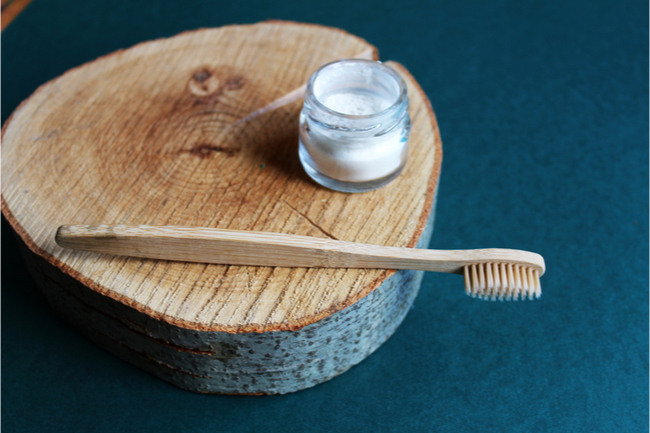

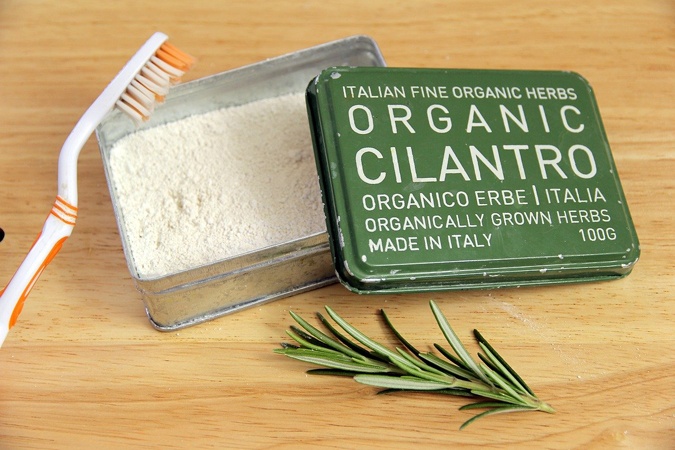

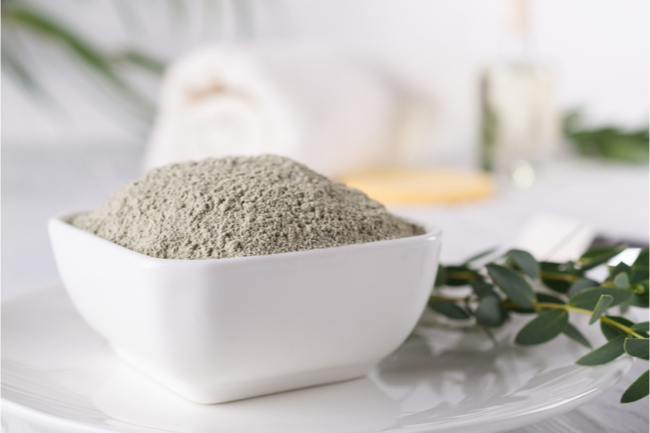
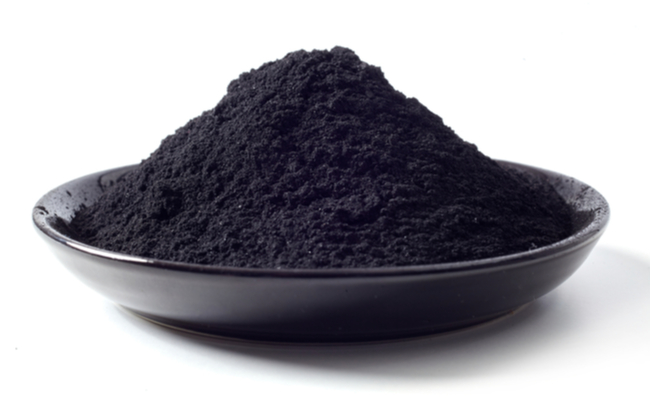
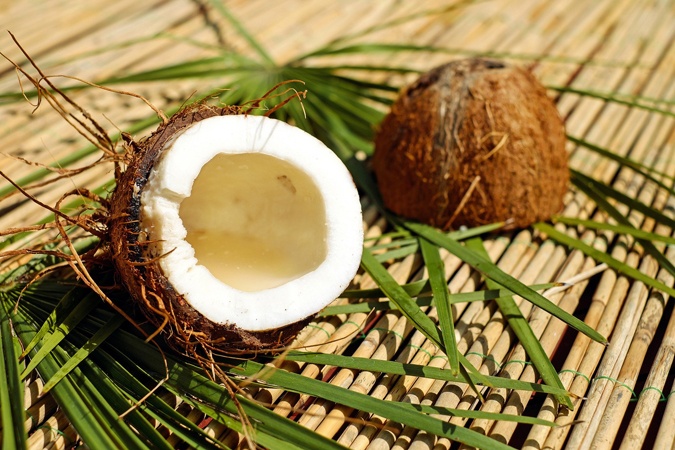







COMMENTS(9)
I LOVE tooth powder. While I don’t use this exact ingredient list I do include many of the ingredients listed plus a couple of others. I add pink salt from Afghanistan, and birch derived xylitol, which is supposed to kill bad mouth bacteria, baking soda, and 3 clays, and peppermint oil. I’m thinking of adding some powdered cumin which whitens and would love to try the horse tail. The last 3 trips to the dentist, she marveled at how clean my teeth are! Once you get used to no foam and the powder aspect, you will feel a marked improvement in cleanliness in your mouth.
Hi Harpiano! Ooh, I didn’t know you could get xylitol from a birch. …or pink salt from Afghanistan. Cool! I’d be curious to try some cumin, myself. And congrats on the good dentist visits.
my tooth powder: red dock, chaparral, juniper, yerba mansa, and white sage; plus I take Equisetum Hymale powder every day
Thanks for sharing, Emmylou912! I was thinking of using juniper once upon a time. I guess I got distracted though, because I never seem to have gotten around to it. Glad you have the Equisetum. It can be hard to find. (TGN has it, of course.) I’ve got some growing that I’m dividing as fast I can. Ha.
Hi Emmy Lou! Do you mind sharing where you get your tooth powder ingredients? I purchased the dental DVD and I see I can purchase the Equisetum Hymale powder on this site, but I’m having trouble finding the other herbs. Thanks in advance!
Hi Kristine. I”m obviously not Emmy Lou, but one good source is mountainroseherbs.com
In 2018 I looked up all the ingredients on my commercial organic health food toothpaste and was shocked at the unhealthy results most of them produce like glycerine. Also xanthum gum is a fermented form of corn soy wheat etc which are all GMO, for what, to make the paste emulsified and squeezable.
I started making my own paste with rhassoul clay which has 1/10th the amount of aluminum as bentonite. Mixed with water, organic melted coconut oil and essential oils which are changeable each batch. Tea tree, oregano, peppermint, cloves, thieves, etc.
It is a lovely paste kept in a glass jar and scooped out with a wooden spoon, as convenient as a plastic tube!
I leave the paste in my mouth for 5 minutes to maximize the antimicrobial effects.
Looking up the microbes on youtube to see what they looked like on a contrast phase microscope. I had deep lines across my ear lobes indicating a heart problem according to Dr. Oz. The spirochetes are the worm like microbes that burrow into the blood vessels and go to the heart. Those lines are almost gone now. Took some time.
Just remember to spit it out the clay paste into a compost container and not the sink, to prevent clogging the pipes.
What if my teeth are VERY sensitive? I currently use a non-flouride toothpaste for sensitive teeth.
I, too, have sensitive teeth and use toothpaste that contains xylitol, which I’ve read remineralizes tooth enamel and that has been my experience. Though recently I had to use my husband’s Tom’s of Maine toothpaste with xylitol and it made my teeth hurt, so perhaps they’re not all the same. I’m going to try making my own powder with xylitol and see how it goes.